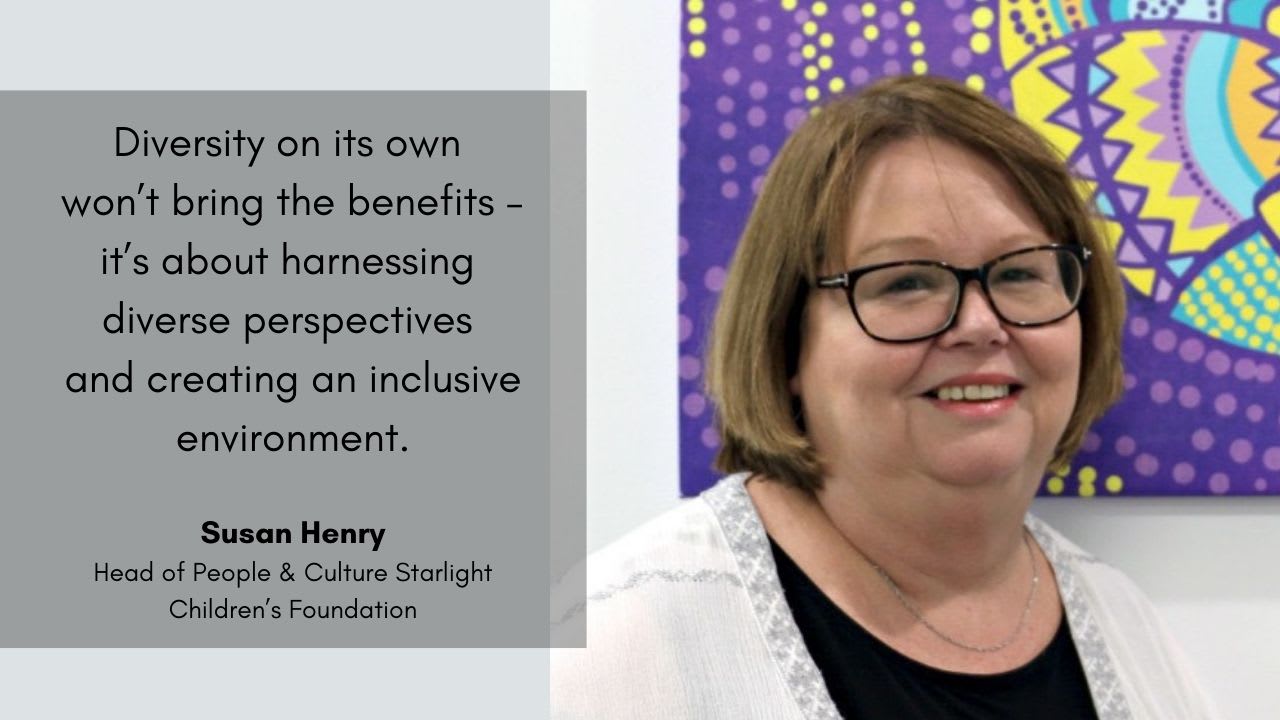Diversity on its own won’t bring the benefits, invest in inclusion: Susan Henry


Diversity, inclusion and equity (DEI) are key priorities for the new generation of workforce globally, and companies who ignore to invest in it may lose the war for talent.
Employees want a psychologically safe environment to work, where they can be their authentic selves.
In a recent interview, Susan Henry, Head of People & Culture at Starlight Children’s Foundation discusses the need to invest in promoting diverse perspectives at work and shares how DEI leaders approach conversations challenging meritocracy in diversity hiring.
Do you see a shift in outlook towards DEI from the right thing to do to a business imperative? What are your thoughts on making DEI more impactful across the business?
DEI is still the right thing to do, but it also has enormous benefits when you can harness different perspectives. Collaboration increases, decision-making is more effective and there is a high performance overall.
A diverse workplace is a better workplace, and that leads to better business better outcomes for everyone.
For this to be impactful across the business, you do need buy-in from the team. And that starts from the top with the leadership team.
Diversity on its own won’t bring the benefits – it’s about harnessing these diverse perspectives etc and creating an inclusive environment.
It’s a sad reflection on the progress that we’re still talking about diversity as a gender issue. That’s because we haven’t made much progress, and we should be looking at all the things that make us different – not just gender.
What are some myths and stereotypes that hinder employment and growth opportunities for women working professionals?
At Starlight we have a fabulous CEO who happens to be a woman. This is probably not a surprise as female CEOs are prominent in the “for impact sector” but more broadly, the representation of women at the CEO level remains very low.
Of course, there are still hindrances to female professionals, and while we’ve come a long way, we’re not there yet. We need governments and corporates to take serious action now to change this.
Some of the myths and biases include women won’t work as hard, they have to juggle all sorts of things, they will have the babies and they will need more flexibility.
Women still do more unpaid work than men – around 29 hours a week more at the moment. Women are feeling more time-stressed than men, and those with young children report being the most time -stressed of everyone. Women still have to juggle in a way men don’t, and that isn’t a myth or a stereotype, that’s reality. Unfortunately that needs to change before we see a real shift in employment and growth opportunities for women.
How can organisations help the women working professionals address and overcome the “entitlement gap” or “unentitled mindset?”
Women need to be recognised and valued for the skills they bring and the outcomes they achieve, and they need to be given opportunities to learn and grow. That means investing in all team members.
Focusing on outcomes is a great start.
It’s also important not to make assumptions about the multiple roles some women plan and how that might impact their career intentions or ability to commit.
A lot of structural barriers need to be removed too!
How can educational institutions and corporates work together to empower more women to grow in their careers?
They can work together to understand the structural biases and barriers that exist, and what steps organisations can take to systematically dismantle these to make workplaces more inclusive.
How can DEI leaders approach conversations challenging meritocracy in diversity hiring?
Organisations need to focus on hiring people based on their strengths and skills to do the role, and the alignment of values.
Recruitment and selection processes need enough flexibility so any adjustments needed for individuals are accommodated. This gives all candidates the opportunity to showcase their strengths and talents, and ensures it’s a two-way process.
New recruits should be placed in roles that play to their strengths, where they can grow, develop and achieve as part of a diverse and inclusive team.


